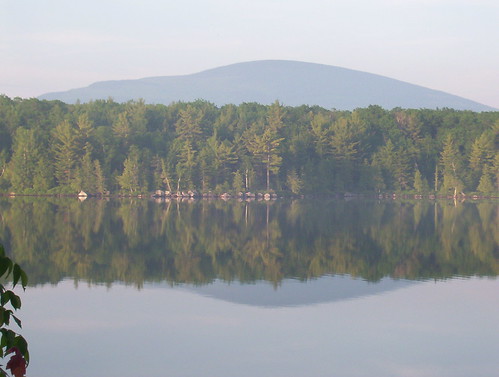 Today was day three of the Certification training. It was more of a assessment of skills and teaching then a training per se. We had learned all the skills on the first two days and just had to demonstrate we could do the same things on moving water. The expected conditions were about 10 kt winds, about 2-4 kts of current, or 1-2 foot breaking waves. We pretty much had all those conditions at Chesapeake Bay where we had launched. Before we launched we had a few talks that each candidate was required to give. Each talk was about 10 minutes long and had to introduce a topic, go over the basics of the topic, wrap up the topic with a summary, then challenge the listen with a little quiz. We were critiqued on how well we could teach the topic we had been given as well as how well we kept the listener engaged on the topic.
Today was day three of the Certification training. It was more of a assessment of skills and teaching then a training per se. We had learned all the skills on the first two days and just had to demonstrate we could do the same things on moving water. The expected conditions were about 10 kt winds, about 2-4 kts of current, or 1-2 foot breaking waves. We pretty much had all those conditions at Chesapeake Bay where we had launched. Before we launched we had a few talks that each candidate was required to give. Each talk was about 10 minutes long and had to introduce a topic, go over the basics of the topic, wrap up the topic with a summary, then challenge the listen with a little quiz. We were critiqued on how well we could teach the topic we had been given as well as how well we kept the listener engaged on the topic.History of Sea Kayaking
My topic was to cover the history of sea kayaking. I didn't find a ton of information on the internet and I don't own any kayaking boats so I had to get what I could from the internet. I had found that kayaking was first used by the northern native populations and was mostly or entirely used for hunting. In fact, qajaq means "hunters boat". I briefly touched on the different regions that had developed kayaking, discussing the types of materials those cultures would have on hand, mostly bone, drift wood, and skins. The kayaks were also sealed with whale fat to keep them water tight. I moved into how kayaking came to the rest of the world and the materials that it started with and how it has evolved. Kayaking is no longer just a kayak for hunting or fishing with but has been used for racing, slalom, whitewater, and freestyle to name a few. And while kayaking has become a very popular sport, being part of the olympics since the 30's, it is still in fact used to this day for transportation, farming and hunting as a way of life still. It was actually quite interesting to read up on the history of kayaking both as a sport and as a way of life.
 We also heard talks about clothing to wear when on the water, which ranged from t-shirt and shorts all the way up to dry suits. We had a navigation talk as well as a talk about signaling devices. The last talk just before we got on the water was a talk about group dynamics and staying together from someone from Florida, so we heard his talk which included stuff about native Floridian animals to not worry about. It was rather humorous.
We also heard talks about clothing to wear when on the water, which ranged from t-shirt and shorts all the way up to dry suits. We had a navigation talk as well as a talk about signaling devices. The last talk just before we got on the water was a talk about group dynamics and staying together from someone from Florida, so we heard his talk which included stuff about native Floridian animals to not worry about. It was rather humorous. Out on the water we mostly just did a skills check off. We moved around in boxes against, with and broach to the wind to show we would turn and handle out boats in the wind and with wind generated waves. I actually over committed to one of my strokes (the bow rudder) and went over right in front of the instructor. Luckily I rolled back up. I really have to work on my roll and outfitting as I find that I tend to fall out of the boat.
After we were finished today we all drove over to Assateague to meet up with part of the group that was only doing the re-certification. Everyone from my group either had no certification or was going from an L3 level to an L4 level. Today was part of the instructor development workshop as well as seeing if we could perform and teach in the L3 conditions. We moved on without getting any idea if we were certified at the L3 level. A little scary when I think about the conditions we are supposed to be encountering tomorrow. They sound big.
Today I was the only female of the group. I know there are women out there who instruct but I guess there are still fewer women going up through the ranks then men. I noticed the same thing when I was getting my 3 star sea kayaking award. I wonder how well a women's only class would work at a kayak school?

No comments:
Post a Comment